"Jean Dunand (1877-1942); Art-déco: "silvered Bronze Vase ""
Jean DUNAND (1877-1942); Art-Déco: "Silvered bronze vase with grooved ovoid body and closed neck", Signed under the original hollow base, dated 1915, inscription "Tombola".Top. :9cm. Requires light polishing to clear the hollow decor... Jean Dunand is a Swiss decorator, sculptor, coppersmith, cabinetmaker, lacquerer and painter, naturalized French, born May 20, 1877 in Lancy (Switzerland) and died June 7, 1942 in Paris. “He is one of the greatest Art Deco creators1. » Artistic journey A multidisciplinary artist and major figure in Art Deco, Jean Dunand was interested in the different artistic currents of his time, and in very diverse fields such as clothing fashion (Paul Poiret, Madeleine Vionnet and Jean-Philippe Worth were among his customers), interior decoration, furniture (Jacques-Émile Ruhlmann, with whom he collaborated), design, goldsmithing2. Well beyond his initial training as a sculptor, Jean Dunand became a renowned master coppersmith3,4 and one of the Western masters of the art of lacquer5,6,7 (with, in particular, Eileen Gray or Gaston Suisse ). In addition to the disciplines that made his reputation, he was also talented in the arts of mosaic8, champlevé and cloisonné enamels, chasing and inlaying9. During his long artistic career, Jean Dunand adopted several decorative styles: “The decorations, of an infinite variety, are sometimes geometric, cubist, but full of originality and invention, sometimes naturalistic. He draws many of them himself. Others were provided to him by painter friends such as Jean Lambert-Rucki, Paul Jouve, Henry de Waroquier and Jean Goulden10. » Jean Dunand was also a great draughtsman, as shown for example by the many portraits11 he produced for personalities of the time, using various techniques (lacquer of course, but also pencil, charcoal, gouache, mosaic)12 . Biography Self-portrait (1932), by Jean Dunand, stone, glass and gold mosaic, Geneva Museum of Art and History (inv. AA 2014-0034). His father is a gold smelter in the watch industry. In 1891, he entered the School of Industrial Arts in Geneva and graduated in 1897 with a scholarship from the city of Geneva. There he twice obtained the first prize for chasing. There he became friends with François-Louis Schmied, who would become a wood engraver, with the sculptor Carl Angst and with the coppersmith Claudius Linossier. Plaque indicating the location of Jean Dunand's studio, rue Hallé in Paris. Wishing to continue his training, he went to Paris. He worked there as a carver while taking evening classes at the National School of Decorative Arts in the studio of the sculptor Jean Dampt. During his holidays in Switzerland, he was introduced to brassware. At the Universal Exhibition of 1900, he obtained a gold medal for his sculpture Quo vadis. In 1903, he participated for the first time in the Salon des Arts Décoratifs, with a carved wooden bread tray. The following year, he set up his studio on rue Hallé, in the Alésia district of the 14th arrondissement of Paris. He presents a stone statue, L'Éveil, at the Salon of the Society of Decorative Artists. In 1905, he exhibited brassware vases for the first time at the salon of the Société Nationale des Beaux-Arts. In 1906, he married Marguerite Moutardier with whom he had six children. In 1909, Ernest Biéler made his portrait by representing him with his coppersmith and chisel tools. Initially named Jules-John, he Frenchified his first name in Jean. In 1912, he met the Japanese Seizo Sugawara who resided in France and with whom he was introduced to lacquer13. At the Salon des Artistes Décorateurs in 1913, he presented a Vase with Serpents almost 1.30 m tall as well as a bronze Caduceus clock. In 1921, a group formed by Jean Dunand, Jean Goulden, Paul Jouve and François-Louis Schmied formed, offering its first exhibition at the Galerie Georges Petit. Jean Dunand exhibited there, to everyone's astonishment, not only brassware vases but for the first time panels, screens and lacquered furniture. Many decorative motifs were proposed by Jean Lambert-Rucki, a few others by Gustave Miklos14. At the 1925 Decorative Arts exhibition, four monumental vases by Jean Dunand decorated the courtyard of the Métiers d'art pavilion15. Exhibition of lacquers by Dunand at the Salon des artistes décorateurs in 1930. Jean Dunand received several orders in the 1930s for the interior decoration of ocean liners. Thus, for L'Atlantique, he made black lacquer panels then, for Normandy, he made five large panels (6 meters high by 5.80 meters wide) on the theme Games and Joys of Man. . Fishing, Sports, The Conquest of the Horse, The Harvest and The Dance adorned the smoking room and part of the first class lounge. The set consisted of 1,035 elements .
Types de traductionsTraduction de texteTexte source
2 357 / 5 000Résultats de traductionHe was appointed president of the “lacquer” section of the International Exhibition in Paris and, in 1939, he decorated the French pavilion at the International Exhibition in New York. In June 1940, his son Jean-Louis died in combat at the age of 2218; the Square de l'Aspirant-Dunand (Paris) pays homage to him. In June 1941, he took part in the Salon des Tuileries at the Palais de Tokyo. He died on June 7, 194219. Over a period of almost fifty years, Jean Dunand designed and produced more than 1,200 works20. Primary works The lacquers of the Porte-Dorée palace The library of the Colonial Museum, in La Construction moderne, January 31, 1932 (with La Forêt). In 1931, Albert Laprade, the architect of the Palais de la Porte-Dorée, which then housed the permanent Colonial Museum, ordered ten lacquers from Jean Dunand to decorate the museum's library, located on floor 21.22. Library of the Colonial Museum in the 1930s (with Les Sénégalaises in the foreground; in the background, Tiger on the lookout and The Peoples of Africa (Senegal); in the background The elephants). With this official order, Jean Dunand wins the grand prize of the International Colonial Exhibition. For their realization, he uses different lacquer techniques: The Forest or the Jungle (2.95 x 3.35 m), in "drilled" black coromandel lacquer, engraved and enhanced with hollow colored lacquers, The elephants (3.42 x 3.64 m), in torn lacquer on an aluminum background applied to wood, Tiger on the lookout (1.467 x 2.40 m) and Facing Rams or Facing Antelopes (1.485 x 2.41 m), in matt brown torn lacquer on an aluminum background, The peoples of Africa (Morocco), The peoples of Africa (Cameroon) and The peoples of Asia (Indochina), the three in 3.40 x 1.78 m, in torn lacquer on an aluminum background with metal inlay Golden, The peoples of Africa (Senegal) (3.40 x 1.78 m), in torn lacquer on an aluminum background, inlays of ivory, brass and metal, two Les Sénégalaises panels (3.09 x 1.29 m each) in ripped black lacquer, application of red and white and gold with a brush, inlays of ivory, for one and application of red and bronze for the other . These lacquer panels joined the collections of the Quai Branly Museum in 2003, along with the rest of the collections of the National Museum of African and Oceanic Arts (MNAAO). WIKIPEDIA






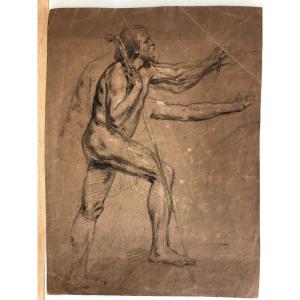

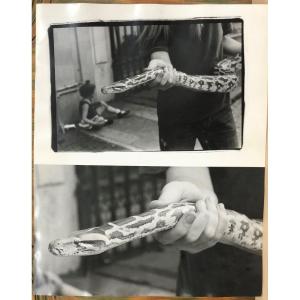
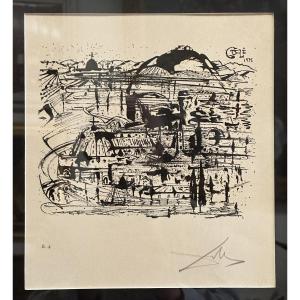
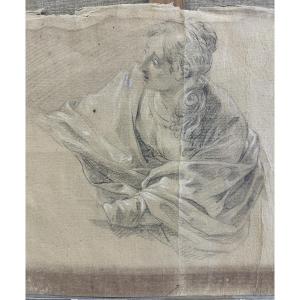

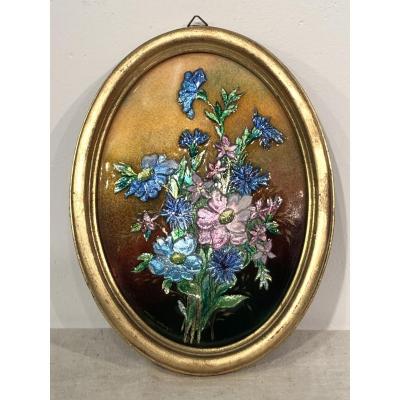


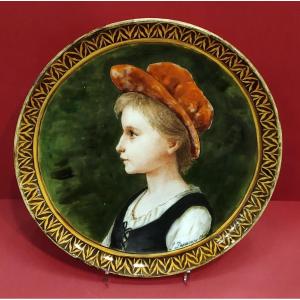





 Le Magazine de PROANTIC
Le Magazine de PROANTIC TRÉSORS Magazine
TRÉSORS Magazine Rivista Artiquariato
Rivista Artiquariato
